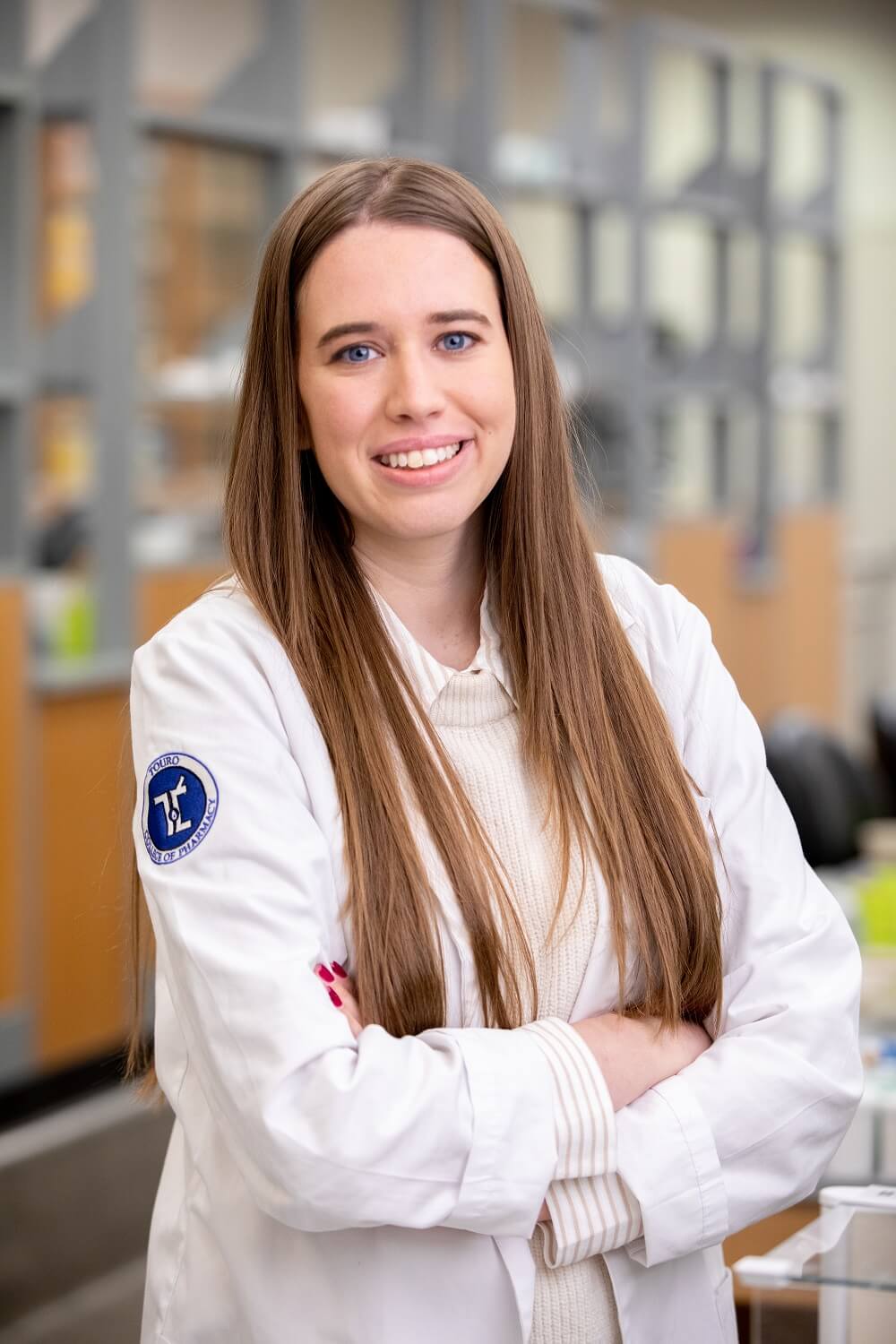News
Making a Difference
Exciting Discoveries in the Lab May Lead to Saving Lives

After graduating from Brooklyn College, P3 Irene Berger thought her future would be in clinical pharmacy. That was before she got started in TCOP’s unique “Research Track”, where she studied how to defeat a key pathogen that leads to Chronic Obstructive Pulmonary Disease (COPD) - a group of diseases that cause airflow blockage and breathing-related problems like emphysema and chronic bronchitis.
COPD makes breathing difficult for the 16 million Americans who have it and is the third leading cause of death by disease in the United States and the world.
In January 2021, Berger won second place at the school’s poster competition for the quality and creativity of her research and clarity of her presentation. She demonstrated that a natural compound inhibits the growth of a key pathogen implicated in serious COPD infections and that the effects of the compound are greater depending on the dose and the timing.
“We solidified the idea that the compound had the antimicrobial effects against the pathogen. We didn’t know that before and needed to really prove it,” said Berger, who is writing up her results to submit for publication while continuing to conduct experiments in off-hours, after classes are finished.
She is also a member of a Touro research team that is collaborating with investigators at Columbia University’s Fu Foundation School of Engineering and Applied Science, working on a novel drug delivery device for COPD patients.
Why did you choose to work on this project?
I was attracted to the project because of the significant impact the research could have on patients, with COPD being the third leading cause of death in the U.S. and globally. Nearly 380 million people are diagnosed with COPD and approximately 3 million patients suffering from COPD die every year. The disease causes serious long-term disability and early death, triggered by serious infections caused by the respiratory bacteria I’ve been studying. The work could really help these patients and prevent mortality because once they have infections, without a viable treatment, it could lead to poor outcomes.
What are the goals of the project?
The overall goal of our research project is to find a new, effective way of inhibiting the growth of respiratory pathogens, which we know can lead to negative prognoses in patients with deadly respiratory diseases like COPD. Current treatment options for patients with these deadly diseases have various limitations. Most notable is the rising prevalence of antibiotic resistance, which renders most antibiotics ineffective in inhibiting the growth of bacteria. They also have side effects. The medical world has begun to redirect its focus, showing a growing interest in discovering suitable new remedies. We are working to demonstrate how natural products can serve as an alternative. Our lab, led by Dr. Zvi Loewy, has made key advances in this area over the past couple of years, starting with a large-scale epidemiological study of nearly 15,000 patients that has evolved into other studies using state-of-the-art methodologies.
Is this research new?
When I was introduced to the project the lab had already made significant findings; they had studied the biofilm life cycle of the respiratory pathogen we are studying and determined which compound was most significant in inhibiting the bacteria I am working with. My role was to find out whether those effects were dose dependent. I compared concentrations of the compound against the bacterial microorganism to determine whether there would be any differences in results, and after multiple trials found that the effects of the natural compound were, in fact, dose dependent.
Did anything surprise you?
I was surprised to find that the effects of the compound are time dependent. I wasn’t trying to determine that, at the time. I was focusing on the mechanism of action of the natural compound; but when looking at all the results lined up, we said, “Oh, my gosh!” That’s another reason why we’re now looking at design concepts for a novel delivery device for the natural compound. In addition, we are exploring release of the compound in a time-controlled way.
What is the next step?
At this stage, we are working on determining the exact effects of the compound on the respiratory pathogen, in terms of its mechanism of action, and moving forward with our collaborators at Columbia University on the design of a device that could allow for the natural compound to be released in a controlled way. As for my career plans, this research has opened up new opportunities that I plan to explore post-graduation, including clinical research or research and development, where I will be able to implement what I’ve learned working in the lab at TCOP.

